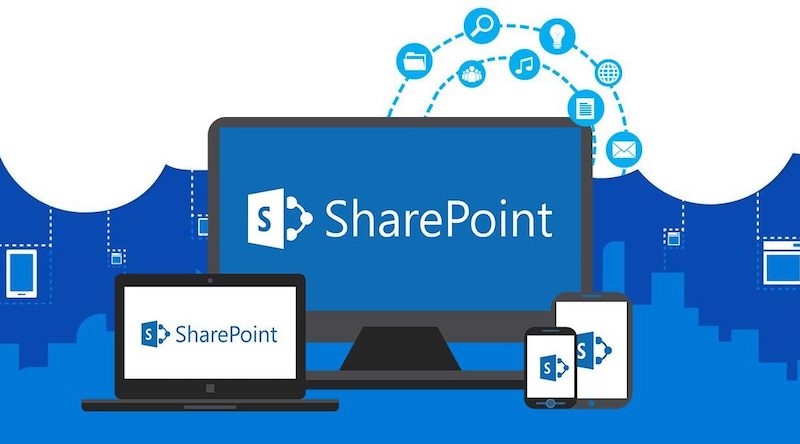SharePoint Online is an attractive cloud-based service from Microsoft Technology Associate that helps organizations manage content, knowledge, and applications to strengthen teamwork, find information quickly, and seamlessly collaborate across the organization.
While SharePoint On-Premise/On-Site/Server is a SaaS-based SharePoint file management tool, designed to be perfect for collaboration between employees in a single organization, regardless of where they are available or when they are available.
Both of these technologies are extremely beneficial to organizations. But many times these technologies are often confused with each other. In addition, these technologies are confused with Microsoft Azure cloud services. To remove the image of these two, there are a few points you should look at. These are:
1. Requirements For Resources
It explains the list of resources needed to perform a particular task. In this case, when comparing SharePoint Online and SharePoint On-Premise, it can be seen that one more room is required to run SharePoint 2016 On-Premises together with an IT team to maintain the server. This IT team is also working on adding more updates and updates. This results in more requirements for hardware as well as software. But on the other hand, as far as SharePoint online is concerned, the need for internal resources is less. It is not necessary to have additional hardware connected to the system. This allows the IT team to work with a single focus and thus provide maximum productivity.
2. Address of The Information
In the business, the address of the data, ie where the entire company information is located, is extraordinarily favorable. There are so many important pieces of information in it, and it must therefore be stored in a very secure but accessible place. SharePoint Online is not so preferred when it comes to data storage. Many companies do not find it a reliable source for storage. So in this case, SharePoint On-premises is a more preferred one. Various organizations store data there and retrieve it in case of need.
3. Updates & Infrastructure
For SharePoint On-Premises, all updates, as well as updates, are developed and maintained by the IT team of the organization concerned. But on the other hand, when it comes to SharePoint Online, all updates and infrastructure are maintained by Microsoft itself, including this automatically.
The size and number of packages were significantly reduced in SharePoint online. In this way, it can be concluded that the Microsoft technology associate is aware of the requirements of companies. It also takes care of the common events around the world so that the organizations will be updated similarly. Thus, SharePoint Online may be better preferred when updates and infrastructure are due to the high technological development.
4. Cost
An important point that comes to people’s minds when they think of setting up SharePoint is the cost. There is a question that comes to everyone’s mind, and that is: “how much will it cost”? So for the answer, they need to look at their requirements, and then they need to look at the two SharePoint solutions, On-premise and Online.
In the local SharePoint, there will be a purchase of it, hardware maintenance, and it will also cost the license and some other things. Share point online is part of an Office 365 plan, and it is invoiced to the user every month.
5. Collaboration with Mobile Phones
SharePoint Online can be activated in touch-enabled interfaces for different mobile devices. This makes it more and more relevant for employees who have to work while traveling or away from home. It contributes to seamless collaboration between documents with reliable and durable links.
The links shared between users can be opened, changed, and much more. It also allows us to change the location as well as the name of the file being moved. SharePoint on the Premises does not provide such benefits. To be able to work on mobile devices, it must be transmitted using cable, Bluetooth, or email. It’s a tedious job to do compared to SharePoint Online. Another solution is Microsoft Azure Cloud services that are used for the same purpose.
Don’t Miss-
Top Online IDEs for React Development
Security Check Tips & Tricks for Cloud Office 365!!
6. Internal Capabilities
Local solutions are more preferred and dependent on the company’s internal capabilities. The local solution gives them more direct control over the information and the standards for compliance, this is in opposition to the information being maintained in security standards that are industry-specific, or that are verified by third parties. SharePoint online is directly dependent on Microsoft’s built-in data center redundancy.
7. The Difference from The Point of View of Developers
For Developers: SharePoint is a tool that is dynamic and self-enhancing. The tool must be up-to-date; it should always be up to the requirements of companies all over the world. There can be three strategies in which companies wishing to configure and run SharePoint can be divided into:
# Traditional Approach (On-Site)
# SharePoint Online (Moves to The Cloud)
# Hybrid (On-Site and Online)
Level of Trust
Now it is easier to create a customized solution with the arrival of the additional model (previous app) than when what was in full trust. Customization is a straightforward process for On-premise, Cloud, or hybrid SharePoint. Full trust solutions will still be fully supported in SharePoint, but it is not recommended as a strategy because these will not be useful in the cloud in migrations in the future.
SharePoint development services have been used by various companies around the world, and both On-Premise and online types are used. The differences between the two have been noted above. There is another type that is the hybrid type, and it can be a bit expensive, but it is best, as there will be no problems related to SharePoint Solutions in the future.










Leave a Reply